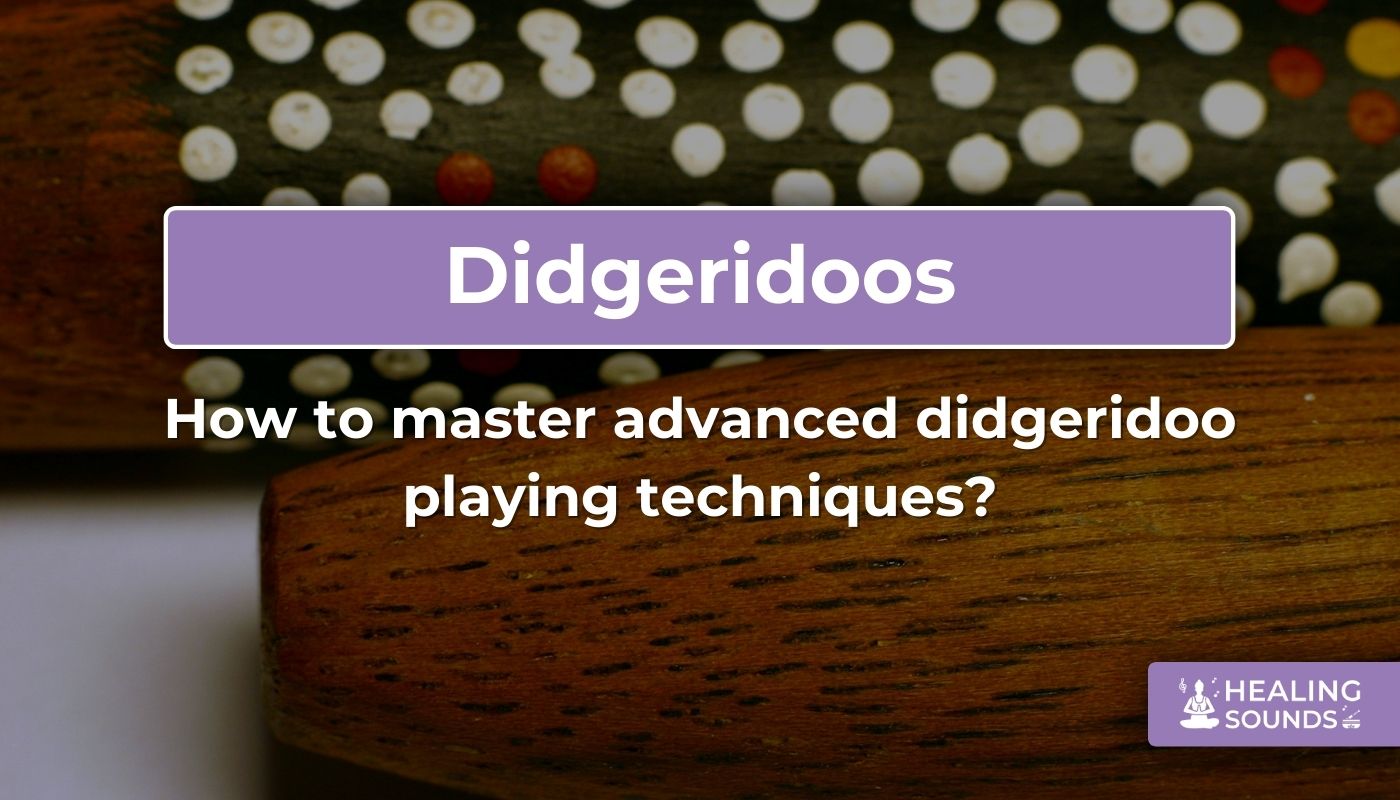Das Didgeridoo, ein uraltes Instrument mit tiefen Wurzeln in der Kultur der australischen Aborigines, bietet einen einzigartigen, ursprünglichen Klang, der tief im Inneren widerhallt. Die Reise zum Erlernen der Didgeridoo-Spieltechniken bedeutet nicht nur, Musik zu lernen; es ist eine Erkundung der Klangheilung, Meditation und einer tiefen Verbindung zu einer alten Tradition. Ob neugieriger Anfänger oder fortgeschrittener Musiker auf der Suche nach neuen Horizonten – dieser Leitfaden führt Sie durch grundlegende Fähigkeiten, fortgeschrittene Methoden wie die Zirkularatmung und die unglaublichen Vorteile dieses Instruments.
Die Grundlagen verstehen: Ihre Drohne finden
Bevor Sie sich an komplexe Rhythmen wagen, müssen Sie zunächst den grundlegenden Bordunklang erzeugen. Dieses charakteristische Summen ist das Herzstück der Didgeridoo-Musik. Das richtige Mundstück (die richtige Lippenposition) ist entscheidend. Entspannen Sie zunächst Ihre Lippen und erzeugen Sie ein sanftes Summen, ähnlich dem Pusten einer Himbeere oder dem Nachahmen eines Motorboots, direkt in das Mundstück.
Konzentrieren Sie sich auf einen gleichmäßigen, entspannten Luftstrom. Erzwingen Sie es nicht. Regelmäßiges Üben stärkt das Gedächtnis der Lippenmuskulatur und macht den Dröhnklang sanfter und nachhaltiger. Dieser Grundklang ist die Leinwand, auf die alle anderen Didgeridoo-Klangvariationen gemalt werden. Geduld ist hier entscheidend, um eine solide Basis für Ihr Spiel zu schaffen.
Die Kunst der Zirkularatmung
Eine der bekanntesten und gefragtesten Fähigkeiten beim Didgeridoo-Spielen – sowohl für Anfänger als auch für Experten – ist die Zirkularatmung . Diese Technik ermöglicht es, einen kontinuierlichen Ton ohne Atempausen aufrechtzuerhalten und so hypnotische, ununterbrochene Klanglandschaften zu erzeugen. Obwohl es eine Herausforderung ist, ist es unglaublich lohnend, sie zu meistern.
Stellen Sie sich das so vor: Speichern Sie eine kleine Menge Luft in Ihren aufgeblähten Wangen. Während Sie diese Wangenluft in das Didgeridoo drücken, um den Klang aufrechtzuerhalten, atmen Sie schnell durch die Nase ein. Wiederholen Sie den Zyklus. Die Koordination erfordert Übung. Oft beginnt man damit, Luft durch einen Strohhalm ins Wasser zu blasen. Obwohl es für einfache Melodien nicht unbedingt *erforderlich* ist, entfaltet die Zirkularatmung das volle Potenzial des Instruments für anhaltende Töne und komplexe Rhythmen.

Didgeridoo, australisches Teakholzinstrument
$149.90 $209.90
Beginnen Sie Ihre Didgeridoo-Reise mit diesem Teakholz-Instrument der Einstiegsklasse, das sich perfekt zum Üben grundlegender Borduntöne und zur Entwicklung Ihrer Zirkularatmungstechnik eignet.
Entdecken Sie dieses DidgeridooErweitern Sie Ihre Soundpalette
Sobald Sie mit dem Bordun vertraut sind und Fortschritte bei der Zirkularatmung machen, ist es Zeit, die reiche Klangvielfalt des Didgeridoos zu erkunden. Einfache Anpassungen sorgen für faszinierende Variationen. Durch Veränderung der Lippenspannung, der Zungenposition und der Kraft des Luftstroms können Tonhöhe und Struktur des Borduns subtil verändert werden.
Experimentieren Sie durch:
- Spannen oder lockern Sie Ihre Lippen leicht.
- Veränderung der Form Ihrer Mundhöhle (wie das Aussprechen der Vokale „i-a-u“).
- Hinzufügen von Lautäußerungen – Summen, Knurren oder einfache Laute in den Bordunton hineinschreien.
Rhythmische Komplexität hinzufügen
Um über anhaltende Töne hinauszugehen, muss Rhythmus integriert werden. Hier kommen fortgeschrittene Didgeridoo-Rhythmen ins Spiel. Durch das Überlagern perkussiver Klänge über den Bordun entstehen komplexe und fesselnde Muster.
Versuchen Sie, Techniken wie die folgenden zu integrieren:
- Zungenschnalzen: Verwenden Sie scharfe „t“-, „k“- oder „p“-Lautlaute mit der Zunge gegen den Gaumen oder die Lippen.
- Zwerchfellimpulse: Verwenden Sie Ihr Zwerchfell, um rhythmische „Schnauben“ oder Akzente im Luftstrom zu erzeugen und so den Dröhnton „wa-wa-wa“ pulsieren zu lassen.
- Wangenknallen: Spannen und entspannen Sie Ihre Wangen scharf, um einen perkussiven Effekt zu erzielen.
Fortgeschrittene Techniken: Vibrato und Obertöne
Um Ihren Klang weiter zu verfeinern, können Sie Techniken wie Vibrato und Obertöne ausprobieren. Vibrato verleiht Wärme und Ausdruck, indem es subtile, schnelle Tonhöhenschwankungen erzeugt. Dies wird oft durch rhythmisches Pulsieren des Zwerchfells oder subtile Variationen der Lippenspannung erreicht.
Obertöne oder Harmonische sind höhere Töne, die gleichzeitig mit dem Grundton erzeugt werden können. Dies erfordert eine präzise Kontrolle der Mundhöhlenform und des Luftstroms, was oft viel Übung erfordert. Die Beherrschung dieser fortgeschrittenen Techniken verleiht Ihren Didgeridoo-Klangvariationen eine unglaubliche Fülle und Komplexität.
Kulturelle Überlegungen und respektvolles Lernen
Es ist wichtig, das Didgeridoo-Spiel mit Respekt vor seinen Ursprüngen in den spezifischen Aborigine-Kulturen Nordaustraliens zu erlernen. Traditionell hat das Didgeridoo (oder Yidaki, wie es in einigen Sprachgruppen wie den Yolngu genannt wird) eine tiefe kulturelle und zeremonielle Bedeutung. Obwohl die Praktiken variieren, wird es in einigen Traditionen hauptsächlich von Männern in zeremoniellen Kontexten gespielt.
Für Lernende außerhalb dieser Kulturen ist es wichtig, dieses Erbe anzuerkennen. Respektvolles Didgeridoo-Spielen bedeutet, seinen Kontext zu verstehen, unangemessene Kommerzialisierung zu vermeiden und von seriösen Quellen zu lernen, idealerweise von indigenen Lehrern oder Quellen, wenn möglich. Jeder kann die Spielmechanik erlernen, aber respektvolles Spielen bedeutet, seine kulturellen Wurzeln anzuerkennen. Für weitere Informationen zur kulturellen Bedeutung können Quellen wie das Australian Institute of Aboriginal and Torres Strait Islander Studies (AIATSIS) hilfreich sein.
Entdecken Sie unsere Didgeridoo-Kollektion
Dieses Didgeridoo mit 9 Tasten eignet sich ideal zum Erforschen von Klangheilfrequenzen und meditativen Spieltechniken. Mehr erfahren ➔

149,90 €
209,90 €
Erleben Sie satte Didgeridoo-Klänge in kompakter Form, perfekt für unterwegs und zum Üben von Techniken überall. Mehr erfahren ➔

159,90 €
219,90 €
Dieses aus traditionellem Eukalyptusholz gefertigte Instrument bietet authentischen Klang für fortgeschrittene Spieltechniken. Mehr erfahren ➔
Der Weg zur Meisterschaft: Übung und Geduld
Das Erlernen der Didgeridoo-Spieltechnik geschieht nicht über Nacht. Wie lange dauert es? Das ist sehr unterschiedlich. Grundlegende Borduntöne und einfache Rhythmen erfordern möglicherweise Wochen oder Monate konsequenten Übens. Zirkularatmung und fortgeschrittene Techniken können deutlich länger – manchmal Jahre – dauern, bis man sie vollständig beherrscht.
Der Schlüssel liegt in regelmäßigem, konzentriertem Üben. Schon kurze, tägliche Einheiten sind effektiver als seltene, lange. Seien Sie geduldig mit sich selbst, feiern Sie kleine Erfolge und genießen Sie den Lernprozess und die Entwicklung Ihres individuellen Stils. Die Reise selbst ist eine Form der Meditation und Selbstfindung.
Mehr als Musik: Das heilende Potenzial des Didgeridoos
Didgeridoo-Spielen bietet mehr als nur musikalischen Ausdruck; es wird zunehmend für seine therapeutische Wirkung anerkannt. Die tiefen Resonanzfrequenzen und rhythmischen Atemmuster können tiefgreifende Auswirkungen auf Körper und Geist haben.
- Gesundheit der Atemwege: Die tiefe Atmung stärkt die Atemmuskulatur und kann die Lungenkapazität verbessern. Studien haben sogar ihre Anwendung bei Schlafapnoe und Schnarchen untersucht.
- Stressabbau: Die Schwingungsnatur des Klangs und die zum Spielen erforderliche Konzentration können Entspannung und einen meditativen Zustand herbeiführen und so zur Reduzierung von Stress und Angst beitragen.
- Rumpfkraft: Durch die Aufrechterhaltung der Körperhaltung und der Atemkontrolle werden die Rumpfmuskeln beansprucht.
- Achtsamkeit: Das Spielen erfordert Präsenz und Konzentration und ist daher eine hervorragende Achtsamkeitsübung.
Die Beschäftigung mit dem Didgeridoo kann ein wirkungsvolles Mittel zur Steigerung des allgemeinen Wohlbefindens sein, indem es durch Klang Körper, Geist und Seele verbindet.
Fazit: Ihre Didgeridoo-Reise erwartet Sie
Das Erlernen der Didgeridoo-Spieltechnik ist ein erlebnisreicher und lohnender Weg, der die Entwicklung musikalischer Fähigkeiten mit kultureller Wertschätzung und potenziellen gesundheitlichen Vorteilen verbindet. Von der Entwicklung eines soliden Borduns und dem Erlernen der Zirkularatmung bis hin zum Erkunden fortgeschrittener Didgeridoo-Rhythmen und Klangvariationen – jeder Schritt vertieft Ihre Verbindung zu diesem unglaublichen australischen Instrument.
Gehen Sie den Lernprozess mit Geduld und Respekt an. Lassen Sie sich von den alten Klängen in Ihrem musikalischen Ausdruck leiten und vielleicht sogar Ihr Wohlbefinden steigern. Bei Healing Sounds legen wir großen Wert darauf, Ihnen hochwertige Instrumente zur Verfügung zu stellen, die Sie auf Ihrem Weg unterstützen. Entdecken Sie unsere Kollektion und finden Sie das perfekte Didgeridoo, um Ihr Klangabenteuer zu beginnen oder fortzusetzen.
Häufig gestellte Fragen zum Erlernen von Didgeridoo-Techniken
Die grundlegende Technik besteht darin, einen Dröhnton zu erzeugen, indem Sie Ihre entspannten Lippen bei gleichmäßigem Luftstrom in das Mundstück blasen. Zu den fortgeschrittenen Techniken gehören Zirkularatmung , Lautäußerungen, Zungenartikulationen, Zwerchfellpulse und die Kontrolle von Obertönen, um Rhythmen und Klangvariationen zu erzeugen.
Das Erlernen der Grundlagen (wie z. B. eines gleichmäßigen Brummens) kann bei regelmäßiger Übung einige Wochen bis Monate dauern. Das Beherrschen fortgeschrittener Techniken wie fließender Zirkularatmung und komplexer Rhythmen kann Monate oder sogar Jahre dauern. Es hängt vom individuellen Engagement und der Übungshäufigkeit ab.
Die kulturellen Gepflogenheiten der verschiedenen Aborigine-Gruppen Australiens unterscheiden sich. In einigen Traditionen wird das Didgeridoo (oder Yidaki) traditionell nur von Männern gespielt, insbesondere in zeremoniellen Kontexten. Für nicht-indigene Lernende ist es wichtig, diese kulturellen Gepflogenheiten zu kennen und zu respektieren.
Ja, Menschen jeder Herkunft können das Didgeridoo-Instrument selbst erlernen. Es ist jedoch wichtig, dies respektvoll zu tun und seine Ursprünge und kulturelle Bedeutung innerhalb der spezifischen Traditionen der Aborigines anzuerkennen. Das Erlernen des Kontexts ist ebenso wichtig wie das Erlernen der Techniken.
Nein, es ist nicht unbedingt notwendig, um mit dem Spielen anzufangen oder Freude am Instrument zu haben. Grundlegende Rhythmen und Klänge lassen sich auch ohne Zirkularatmung spielen. Um den für viele traditionelle und zeitgenössische Didgeridoo-Stücke charakteristischen, kontinuierlichen Bordunklang zu erzeugen und komplexere, anhaltende Stücke zu spielen, ist Zirkularatmung jedoch unerlässlich.


